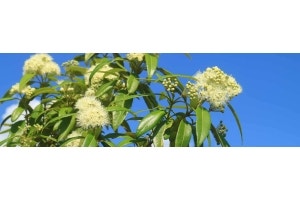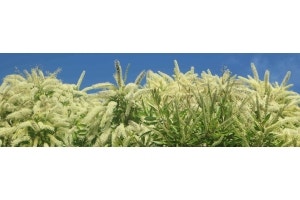
Have you always dreamt of an English style garden? Do you wish you could be taking tea and scones on a freshly-mowed lawn right now, while the gentle sounds of a village green cricket match provide the accompaniment? With overseas travel being...challenging, at present, we're bringing you ways to feel like you're somewhere else, even when you're at home.
Here, we show you how to create the look of a traditional English garden in your own back yard.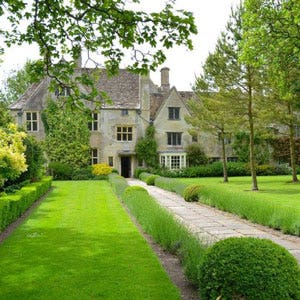 There are two notable - and very different - styles of gardening which come to mind when thinking about England.
There are two notable - and very different - styles of gardening which come to mind when thinking about England.
It doesn't have to be big enough to play cricket on, or even a round of croquet - but it should be flat, smooth, and roomy enough for a picnic blanket. Leave the grass a little longer than Aussie standards, and don't worry about the weeds - the occasional daisy or patch of clover adds to the bucolic charm.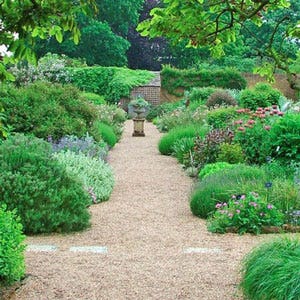 Many large estates have 'garden rooms', smaller gardens-within-gardens, formed with walls of evergreen hedge and weathered brick or mossy stone. Small green shrubs create a formal network of lines and squares, filled in with informal perennials, herbs, vegetables or flowering shrubs. Each room is planted in its own distinctive style. Many derive from Medieval apothecary's gardens, where plants were grouped according to medicinal benefit.
Many large estates have 'garden rooms', smaller gardens-within-gardens, formed with walls of evergreen hedge and weathered brick or mossy stone. Small green shrubs create a formal network of lines and squares, filled in with informal perennials, herbs, vegetables or flowering shrubs. Each room is planted in its own distinctive style. Many derive from Medieval apothecary's gardens, where plants were grouped according to medicinal benefit.
Sissinghust Castle is famous for this style, particularly the room of white-flowered plants.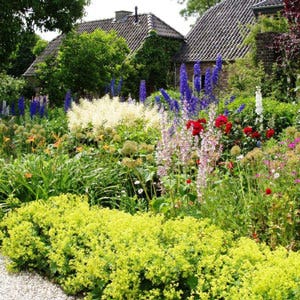 The second English style is a three-season garden, starting with bulbs and blossom in early spring, through full-on flower in high summer, and winding up with berries and seedpods in autumn. Green hedging, picket fences, or ancient walls create a restful backdrop to the rambling riot of colour that is an English herbaceous border. They also help to warm the soil and shelter tender plants from harsh weather. Nothing is formal in a cottage garden border - if plants flop over, prop them up with twiggy branches. If colours clash, plant more green foliage to soften it. Herbs and vegetables jostle for space alongside ornamental plants.
The second English style is a three-season garden, starting with bulbs and blossom in early spring, through full-on flower in high summer, and winding up with berries and seedpods in autumn. Green hedging, picket fences, or ancient walls create a restful backdrop to the rambling riot of colour that is an English herbaceous border. They also help to warm the soil and shelter tender plants from harsh weather. Nothing is formal in a cottage garden border - if plants flop over, prop them up with twiggy branches. If colours clash, plant more green foliage to soften it. Herbs and vegetables jostle for space alongside ornamental plants.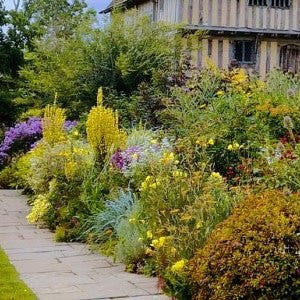 Make sure you have something to look at in every season, from early spring to late autumn. British explorers and plant-hunters brought back plants from all around the globe, so Chinese lilies rub shoulders with Mexican dahlias and South African gladioli.A wigwam of bamboo canes, or an arch over a path, provides an opportunity to squeeze in more flowers in the form of climbers, especially scented ones.
Make sure you have something to look at in every season, from early spring to late autumn. British explorers and plant-hunters brought back plants from all around the globe, so Chinese lilies rub shoulders with Mexican dahlias and South African gladioli.A wigwam of bamboo canes, or an arch over a path, provides an opportunity to squeeze in more flowers in the form of climbers, especially scented ones.
 Essential plants to get that English look are box, yew and privet hedges. They don't have to be clipped too tightly, unless you're creating a traditional Medieval-style knot garden. Add colour with a mix of flowering annuals and herbaceous perennials- taller plants like delphinium, lupin, and foxglove to give vertical accents; smaller ones like geraniums, rock rose, and daisies planted in between. Make room for blowsy blooming pastel-coloured shrubs like peony, hydrangea, and roses. Train climbing roses, sweet peas, clematis and jasmine to tumble fragrantly over pergolas and arches. Deadhead to encourage more blooms through the summer; at the end of the season, leave the last seedheads on for the birds - and winter interest for you.
Essential plants to get that English look are box, yew and privet hedges. They don't have to be clipped too tightly, unless you're creating a traditional Medieval-style knot garden. Add colour with a mix of flowering annuals and herbaceous perennials- taller plants like delphinium, lupin, and foxglove to give vertical accents; smaller ones like geraniums, rock rose, and daisies planted in between. Make room for blowsy blooming pastel-coloured shrubs like peony, hydrangea, and roses. Train climbing roses, sweet peas, clematis and jasmine to tumble fragrantly over pergolas and arches. Deadhead to encourage more blooms through the summer; at the end of the season, leave the last seedheads on for the birds - and winter interest for you.
Here, we show you how to create the look of a traditional English garden in your own back yard.
English Style Gardens - stately home
 There are two notable - and very different - styles of gardening which come to mind when thinking about England.
There are two notable - and very different - styles of gardening which come to mind when thinking about England. The first English style is that of the great country estates and stately homes. These gardens are notable for their framework of trees and neat green hedges, which provides a structure to the garden in winter months and a restful backdrop to brighter plants in summer. Large trees help recreate an idyllic naturalistic landscape, together with rolling slopes, banks, and artfully-placed lakes and ponds. This look is hugely influenced by landscape designer Lancelot "Capability" Brown.Even a small green tree, especially a deciduous one like birch, and a little green hedge, will give you a flavour of the look.
Remember to leave space for the essential English garden element - the neatly-mown lawn.
It doesn't have to be big enough to play cricket on, or even a round of croquet - but it should be flat, smooth, and roomy enough for a picnic blanket. Leave the grass a little longer than Aussie standards, and don't worry about the weeds - the occasional daisy or patch of clover adds to the bucolic charm.
 Many large estates have 'garden rooms', smaller gardens-within-gardens, formed with walls of evergreen hedge and weathered brick or mossy stone. Small green shrubs create a formal network of lines and squares, filled in with informal perennials, herbs, vegetables or flowering shrubs. Each room is planted in its own distinctive style. Many derive from Medieval apothecary's gardens, where plants were grouped according to medicinal benefit.
Many large estates have 'garden rooms', smaller gardens-within-gardens, formed with walls of evergreen hedge and weathered brick or mossy stone. Small green shrubs create a formal network of lines and squares, filled in with informal perennials, herbs, vegetables or flowering shrubs. Each room is planted in its own distinctive style. Many derive from Medieval apothecary's gardens, where plants were grouped according to medicinal benefit.Sissinghust Castle is famous for this style, particularly the room of white-flowered plants.
English Style Gardens - cottage garden
 The second English style is a three-season garden, starting with bulbs and blossom in early spring, through full-on flower in high summer, and winding up with berries and seedpods in autumn. Green hedging, picket fences, or ancient walls create a restful backdrop to the rambling riot of colour that is an English herbaceous border. They also help to warm the soil and shelter tender plants from harsh weather. Nothing is formal in a cottage garden border - if plants flop over, prop them up with twiggy branches. If colours clash, plant more green foliage to soften it. Herbs and vegetables jostle for space alongside ornamental plants.
The second English style is a three-season garden, starting with bulbs and blossom in early spring, through full-on flower in high summer, and winding up with berries and seedpods in autumn. Green hedging, picket fences, or ancient walls create a restful backdrop to the rambling riot of colour that is an English herbaceous border. They also help to warm the soil and shelter tender plants from harsh weather. Nothing is formal in a cottage garden border - if plants flop over, prop them up with twiggy branches. If colours clash, plant more green foliage to soften it. Herbs and vegetables jostle for space alongside ornamental plants.
 Make sure you have something to look at in every season, from early spring to late autumn. British explorers and plant-hunters brought back plants from all around the globe, so Chinese lilies rub shoulders with Mexican dahlias and South African gladioli.A wigwam of bamboo canes, or an arch over a path, provides an opportunity to squeeze in more flowers in the form of climbers, especially scented ones.
Make sure you have something to look at in every season, from early spring to late autumn. British explorers and plant-hunters brought back plants from all around the globe, so Chinese lilies rub shoulders with Mexican dahlias and South African gladioli.A wigwam of bamboo canes, or an arch over a path, provides an opportunity to squeeze in more flowers in the form of climbers, especially scented ones.
English Style Gardens - get the look
 Essential plants to get that English look are box, yew and privet hedges. They don't have to be clipped too tightly, unless you're creating a traditional Medieval-style knot garden. Add colour with a mix of flowering annuals and herbaceous perennials- taller plants like delphinium, lupin, and foxglove to give vertical accents; smaller ones like geraniums, rock rose, and daisies planted in between. Make room for blowsy blooming pastel-coloured shrubs like peony, hydrangea, and roses. Train climbing roses, sweet peas, clematis and jasmine to tumble fragrantly over pergolas and arches. Deadhead to encourage more blooms through the summer; at the end of the season, leave the last seedheads on for the birds - and winter interest for you.
Essential plants to get that English look are box, yew and privet hedges. They don't have to be clipped too tightly, unless you're creating a traditional Medieval-style knot garden. Add colour with a mix of flowering annuals and herbaceous perennials- taller plants like delphinium, lupin, and foxglove to give vertical accents; smaller ones like geraniums, rock rose, and daisies planted in between. Make room for blowsy blooming pastel-coloured shrubs like peony, hydrangea, and roses. Train climbing roses, sweet peas, clematis and jasmine to tumble fragrantly over pergolas and arches. Deadhead to encourage more blooms through the summer; at the end of the season, leave the last seedheads on for the birds - and winter interest for you.
























